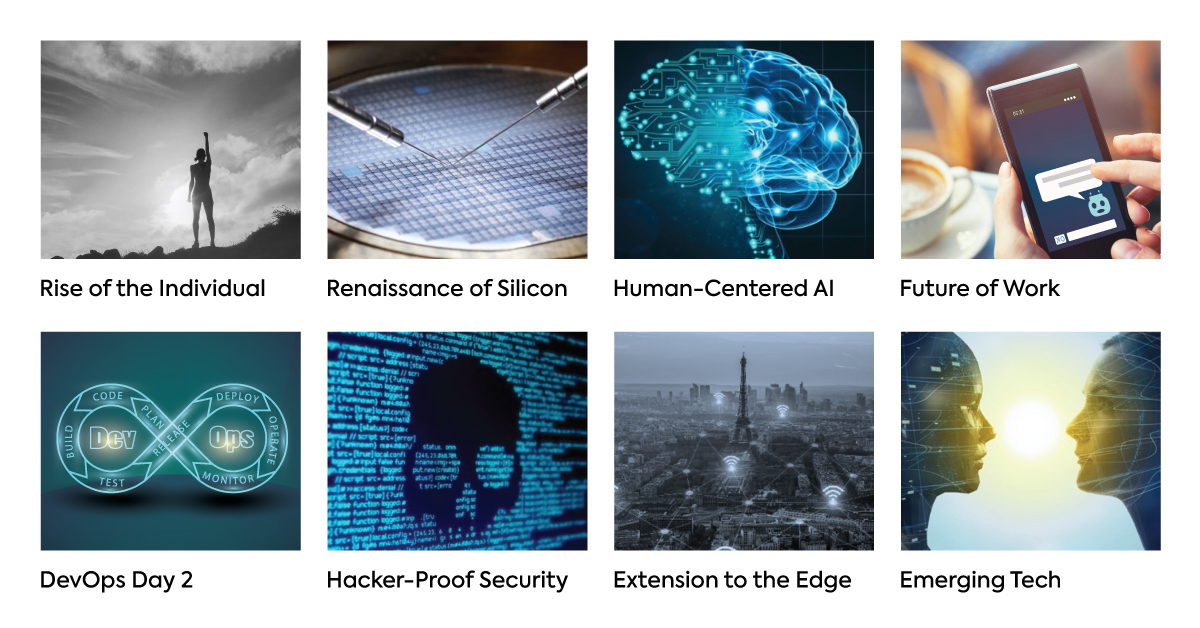We recently shared the Mayfield view on enterprise tech in 2020, including our take on the technology stack and lessons learned from gamechanger companies we’ve partnered with over the last decade such as HashiCorp, Marketo, Rancher, Outreach, and more. As we look to partner with entrepreneurs who are building the giants of the new era, our enterprise investment POV is informed by the following eight themes:

1. Rise of the Individual
ROI in the world of tech historically meant Return on Investment, but it has evolved into a movement toward the Rise of the Individual. True ROI companies go beyond simply building communities to living by them. These companies align their success with the measurable elevation of the individuals their product/service empowers. Their founders are passionate about the specific persona of the practitioner they are targeting, often having walked in their shoes before. Along the way, these companies become category leaders and valuable companies.
2. Renaissance of Silicon
The silicon industry has been governed by Moore’s Law – the observation that the number of transistors on a chip doubles every two years, thereby doubling the speed and capability of computers. However, this is coming to an end, due to an even more immutable law: material physics. It simply isn’t possible to squeeze more transistors onto the tiny silicon wafers that make up today’s processors. In addition, the x86 architecture that ruled the semiconductor industry for over 40 years doesn’t work well for the new application use cases that are on the rise today.
We believe that there will be a class of companies that deliver new silicon architectures and designs that are built and optimized for specialized functions, including data intensity, the performance needs of artificial intelligence and machine learning, and the low-power needs of edge computing devices.
3. Human-Centered AI
AI should enhance humans, rather than replace them. We believe that the real power of AI is when it is collaborative, augmentative, and improves productivity and even quality of life. Some examples include using AI in recruiting to eliminate bias in hiring; using AI for repetitive tasks in customer support so that humans can handle escalated cases for greater satisfaction; and using AI in hospitals to pattern match in radiation diagnostics, so humans can come in for the final analysis.
4. Future of Work
The rise of gig workers, the potential to increase productivity by automating tasks, the dramatic increase in a decentralized workforce that are often deskless and mobile, and the desire for workers to derive meaning beyond income from their labor are some of the forces that are shaping the future of work. A new class of companies is already being created to leverage these trends.
5. DevOps Day 2
The DevOps movement began over a decade ago as a means of bringing software developers and IT operations closer together, with an emphasis on faster deployment and improved quality. But there is room to grow. Faster cycle times, distributed teams, and complex microservices have led to significant organizational challenges. If the first decade was DevOps Day 1, we are now in DevOps Day 2 – keeping everything up and running at scale.
There are many opportunities for companies in this space, including improving productivity and collaboration among both Dev and Ops teams, increasing operational resilience through incident management and observability, bringing security teams closer to developers and IT, and creating API-based process integrations and automations for enterprise workflows and middleware.
6. Hacker-Proof Security
We live in an age of hackers and other bad actors. Enterprises need to build security policies and solutions that respond to breaches but are also effective in preventing them. At the same time, compliance and governance for user privacy regulations are becoming critical for businesses. Some examples include cybersecurity posture transformation, continuous application monitoring, data privacy compliance, and secure access to secrets such as API keys, passwords or certificates.
7. Extension to the Edge
With the rise of 50 billion IoT devices and edge use cases, software that delivers the power of the cloud at the edge with real-time, low-latency access will need to be created. A new class of companies will enable enterprises and service providers to bring a consistent cloud environment to wherever they are distributing their applications – be it on-premises, one or more public clouds, or a diverse set of edge sites and locations.
8. Emerging Tech
Finally, we believe that nascent technologies such as AR/VR, blockchain, quantum computing, robotics, MEMS and others will create outsized opportunities for investment and returns.
Our Team
Our enterprise investment team consists of five investors with operating and investing experience:
- I’m a three-time founder turned investor who has partnered with over 50 entrepreneurs, of which 17 took their companies public and over 20 pursued the M&A path;
- Rajeev Batra is a leading SaaS investor who has partnered with entrepreneurs in diverse areas who have built martech (Marketo/Adobe), salestech (Outreach), servicetech (ServiceMax/GE), and HRtech (SmartRecruiters) companies;
- Ursheet Parikh is a serial entrepreneur (StorSimple/Microsoft) and big company executive (Cisco, Microsoft) turned investor (CloudGenix, Rancher, Versa Networks);
- Patrick Salyer is a wartime CEO (Gigya/SAP) turned investor (Berbix and Couchbase);
- Tejas Maniar brings experience in HRtech and strategy from Google.


